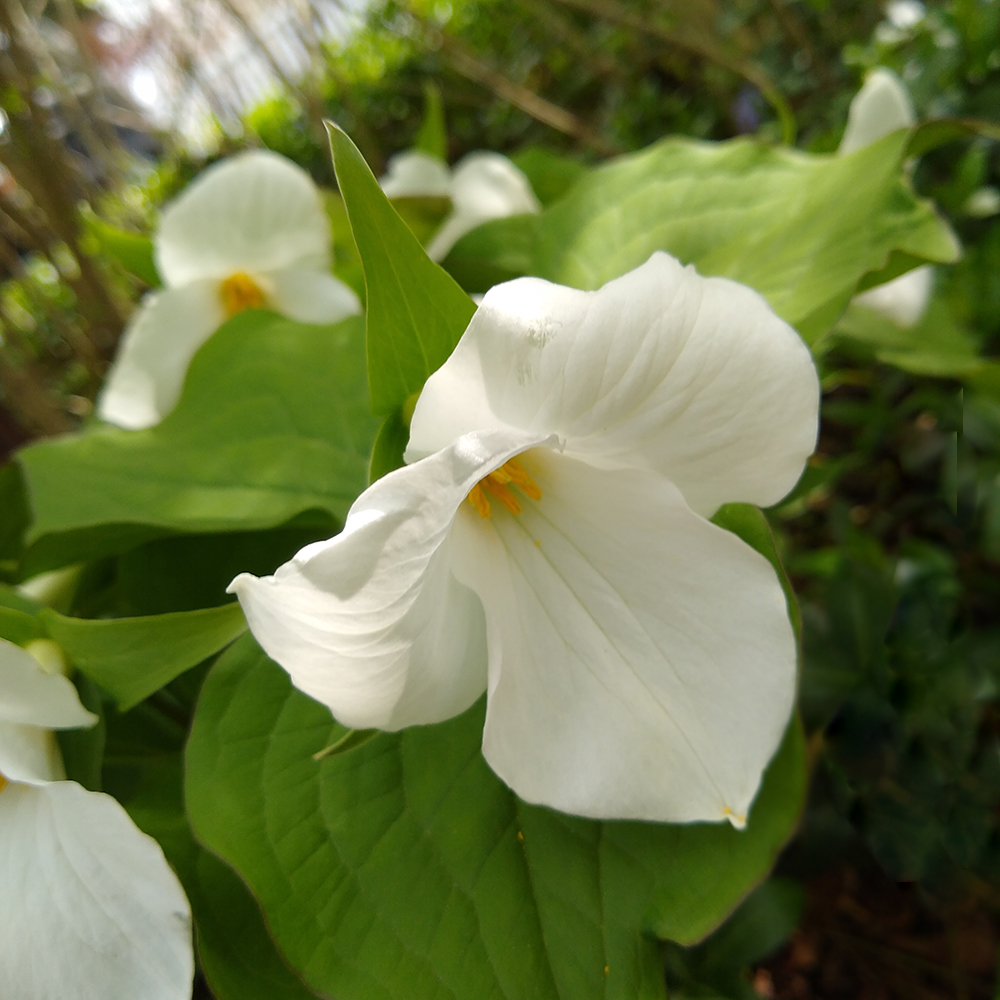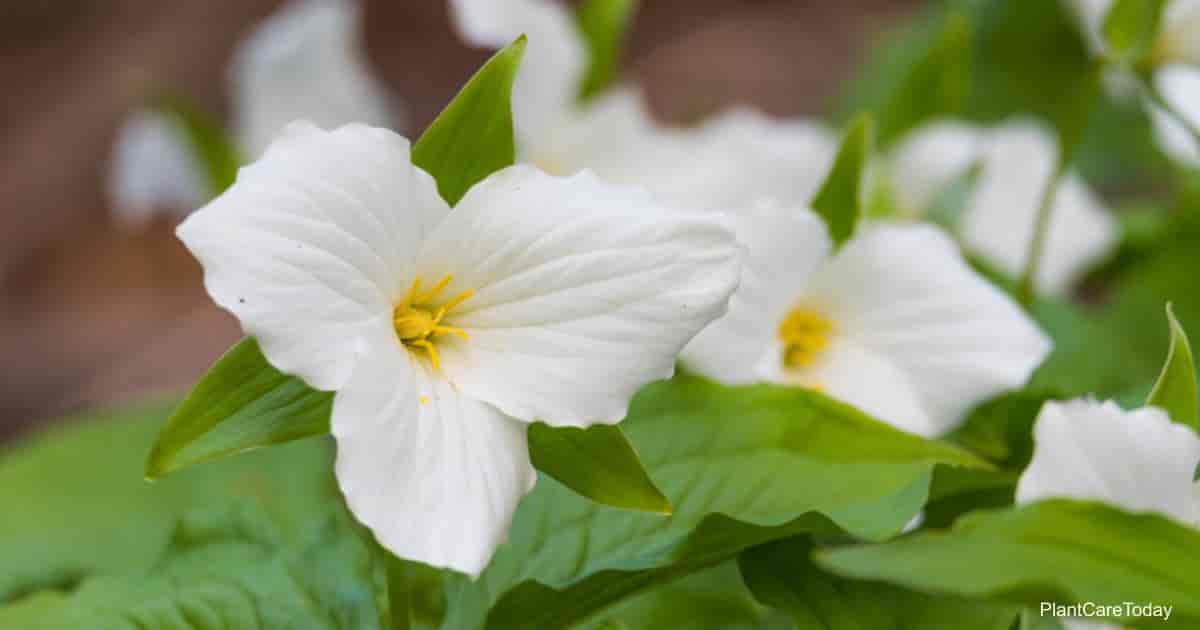Trillium flowers are a delicate and beautiful flower that can be found in various parts of the world, including North America, Asia, and Europe. These flowers have been used for centuries in traditional medicine and as a symbol in different cultures. In this article with Impeccable Nest, we will explore the meaning behind trillium flowers and how they can be used to bring balance and beauty into our lives.

Trillium Flower Meaning: Symbolic
Trillium flowers have a rich history and symbolism that dates back to ancient times. These flowers are often associated with purity, balance, and new beginnings. They are also known for their healing properties and have been used in traditional medicine to treat various ailments.
Perseverance
The trillium flower is a beautiful and unique plant that has captured the attention of many people due to its natural hardiness and ability to survive freezing winters. This flower is known for its ability to emerge in early spring after enduring harsh winter conditions, which has made it a symbol of perseverance, strength, triumph, and self-renewal.
The trillium flower is native to North America and can be found in many different regions across the continent. It is a perennial plant that grows from a bulb-like structure called a rhizome, which allows it to survive through the winter months when other plants may not be able to. The trillium’s ability to withstand bitter winter conditions before proudly announcing the arrival of a new growing season is truly remarkable and has earned it a special place in the hearts of many people.
One of the most significant symbolic associations of the trillium flower is its representation of perseverance. This flower is a reminder that even in the face of adversity, we can push through and emerge stronger on the other side. The trillium’s ability to survive freezing temperatures and harsh conditions is a testament to its resilience and serves as an inspiration to those who may be going through difficult times.
In addition to perseverance, the trillium flower is also associated with strength and triumph. Its ability to overcome the challenges of winter and emerge victorious in the spring is a powerful symbol of strength and resilience. The trillium’s triumph over winter is a reminder that we too can overcome obstacles and achieve our goals if we remain determined and persistent.
Finally, the trillium flower is also a symbol of self-renewal. As the flower emerges from the ground in the spring, it represents the renewal of life and the start of a new growing season. This is a reminder that even when things seem bleak, there is always the potential for growth and renewal. The trillium’s ability to come back year after year is a testament to the power of nature and the resilience of life itself.
The trillium flower is a beautiful and meaningful symbol of perseverance, strength, triumph, and self-renewal. Its natural hardiness and ability to survive harsh winter conditions make it a powerful reminder that we too can overcome adversity and emerge stronger on the other side. Whether you are facing personal challenges or simply looking for inspiration, the trillium flower is a wonderful symbol to keep in mind.
Purity
The trillium flower is a beautiful, delicate plant that is often associated with purity and innocence. This symbolism is largely due to the bright white petals that most trillium flowers possess. In plant symbolism, the color white is often tied to meanings of purity and innocence, as well as other cultural associations.
The trillium’s whiteness gives it an ethereal, delicate beauty that feels transient as the flower rises up from the Earth for mere weeks before giving way again to cold temperatures. That fleeting white flower phase cements the trillium’s purity symbolism for many. The pure white petals of the trillium are also often seen as a symbol of spiritual enlightenment or transcendence, as they seem to glow with a radiant light that is both calming and uplifting.
In addition to its association with purity and innocence, the trillium flower is also sometimes seen as a symbol of rebirth and renewal. This is because the trillium is a perennial plant that returns year after year, even after harsh winters and other challenges. Its ability to survive and thrive in difficult conditions is seen as a testament to the resilience and strength of nature, and the power of life to overcome adversity.
The trillium flower is a powerful symbol of purity, innocence, and spiritual enlightenment. Its delicate beauty and ephemeral nature remind us of the fleeting nature of life, and the importance of cherishing every moment we have. Whether you are a gardener, a nature lover, or simply someone who appreciates the beauty and symbolism of flowers, the trillium is a plant that is sure to inspire and uplift you.
Passing Seasons
Trillium flowers are a beautiful and unique type of flower that has a short lifespan. They emerge in early spring, right before disappearing again. This cycle of blooming and disappearing aligns them with the bloom times of other spring ephemeral wildflowers. The significance of their seasonal orientation makes the trillium a bold visual indicator of changing seasons.
The trillium flower holds symbolic meaning related to those seasonal shifts, life stages, and cycles of death and rebirth aligned with the Earth’s life cycle. As such, it is considered a powerful symbol of renewal and transformation. The trillium flower is often associated with the arrival of spring and the renewal of life after a long winter.
In many cultures, the trillium flower is seen as a symbol of purity, innocence, and grace. It is believed to represent the divine feminine energy and is often associated with the goddesses of fertility and nature. In some Native American cultures, the trillium flower is used in traditional medicine to treat various ailments.
The trillium flower is also associated with the concept of balance and harmony. Its three petals are said to represent the mind, body, and spirit, and the flower is often used in meditation practices to help achieve inner peace and balance.
The trillium flower holds deep symbolic meaning related to the natural cycles of life and death. Its short lifespan and seasonal orientation make it a powerful symbol of renewal and transformation, reminding us of the importance of embracing change and finding balance in our lives.
Life Cycle of Birth, Death, and Rebirth
The trillium flower is a beautiful and unique plant that holds significant symbolic meaning. This flower is native to North America and is known for its ability to endure harsh winter conditions before emerging in the spring for a brief period of time. The trillium’s resilience and ability to bloom in difficult circumstances have made it a powerful symbol of renewal and growth.
The trillium flower’s symbolic resonance is largely due to the dramatic conditions it endures as winter thaws into spring. The plant lies dormant underground during the winter months, waiting for the warmer temperatures and longer days of spring to arrive. When the time is right, the trillium emerges from the dead earth, pushing through the soil to reach the sunlight above.
This process of emergence and blooming is a powerful metaphor for the cycles of life on our planet. Just as the trillium emerges from the ground after a long period of dormancy, so too do many other plants and animals experience periods of hibernation or rest before reemerging with renewed energy and vitality.
The trillium’s ability to bloom for just a brief window before retreating again has taken on larger symbolism relating to themes of ongoing cycles of life on our planet. These cycles are reflected in the plant kingdom as much as they are in animal lives or even human existence. The trillium serves as a potent reminder of how life blossoms even after difficult periods, before eventually dying back to fuel future growth and rebirth.
The trillium flower reminds us that life is not always easy, but that we can find strength and resilience in the face of adversity. It encourages us to embrace the natural cycles of life and to recognize that even in times of darkness and difficulty, there is always the potential for new growth and renewal.
In addition to its symbolic significance, the trillium flower is also prized for its beauty and unique appearance. The flower has three petals and three leaves, which are often arranged in a symmetrical pattern. The trillium comes in a variety of colors, including white, pink, red, and purple.
The trillium flower holds deep meaning and significance for many people. Its ability to endure harsh conditions and bloom in difficult circumstances serves as a powerful reminder of the resilience and strength that we all possess. Whether we are facing personal challenges or navigating the complexities of our ever-changing world, the trillium encourages us to keep moving forward with hope and determination.

Examples of Trillium Flower Meaning in Different Cultures
Trillium flowers have been used in various cultures for centuries, and each culture has its own interpretation of their meaning. Here are some examples of how these delicate blooms are seen in different parts of the world:
Native American Culture
In Native American culture, the trillium flower holds a significant place as it is known as birthroot or wake-robin. These flowers are believed to possess healing powers and have been used in traditional medicine for centuries to treat various ailments. The trillium plant is native to North America and can be found in different parts of the continent, including Canada and the United States.
The trillium flower is considered a symbol of balance and harmony in Native American culture. It represents the delicate balance between humans and nature and is often used in rituals and ceremonies to bring peace and stability to the community. The trillium flower is also associated with the concept of rebirth and renewal, making it an essential part of many spiritual practices.
The trillium plant has been used by Native Americans for medicinal purposes for generations. The roots, leaves, and flowers of the plant are all used to make remedies that can help with various health issues. For instance, trillium root tea is used to treat menstrual cramps, while trillium leaf poultices are applied to wounds to promote healing. The plant is also used to treat respiratory problems, digestive issues, and skin conditions.
Apart from its medicinal properties, the trillium flower is also used in cultural practices. The flower is often used in ceremonies to honor the earth and the natural world. It is also used in rituals to mark important life events such as births, weddings, and funerals. In some communities, the trillium flower is seen as a symbol of fertility and is used in fertility rituals.
The trillium flower holds a special place in Native American culture. It is revered for its healing properties and is used in traditional medicine to treat various ailments. The flower is also seen as a symbol of balance and harmony and is used in rituals and ceremonies to bring peace and stability to the community. Its significance in Native American culture highlights the importance of nature and its role in human life.
Japanese Culture
Trillium flowers, also known as shirayuri in Japan, are a beloved and highly regarded flower in Japanese culture. The name shirayuri translates to “white lily,” which is fitting given the flower’s delicate white petals. These flowers are often given as gifts to express love and affection, and they are also used in traditional tea ceremonies to symbolize purity and innocence.
In Japanese folklore, trillium flowers hold a special significance. It is believed that if you find a trillium flower with four petals, it will bring good luck and happiness into your life. This belief has been passed down through generations and is still held by many Japanese people today.
The trillium flower is native to North America, but it was introduced to Japan in the late 1800s. Since then, it has become a popular flower in Japanese gardens and parks. The flower’s simple yet elegant appearance makes it a favorite among gardeners and flower enthusiasts alike.
In addition to its beauty, the trillium flower holds cultural significance in Japan. It is often used in traditional tea ceremonies, where it is placed in a vase or used as a decoration on the tea table. The flower’s pure white color and delicate petals symbolize the purity and innocence that is valued in Japanese culture.
Trillium flowers are also commonly given as gifts in Japan. They are a popular choice for Valentine’s Day and other romantic occasions, as they are seen as a symbol of love and affection. In fact, giving someone a trillium flower is often considered a more meaningful gesture than simply giving them a bouquet of roses or other common flowers.
The trillium flower holds a special place in Japanese culture. Its beauty, symbolism, and cultural significance have made it a beloved flower among the Japanese people. Whether given as a gift or used in a traditional tea ceremony, the shirayuri is sure to bring joy and happiness to those who encounter it.
Conclusion
Through the striking visual beauty and resilience of the emerging trillium wildflower comes deeper meaning about seasons, cycles, and the delicate balance of ecosystem health. Appreciating the trillium flower for its symbolic connections as well as its continued existence relies on human responsibility to act as protective stewards over these plants to ensure their renewing blooms endure. Much like we benefit from the optimism the trillium inspires about life’s hardiness, we owe these flowers dedication toward their future flourishing.

I am Patricia Mann, an experienced professional in the art of naming children. With a wealth of knowledge in the field of baby names, I aim to assist parents in choosing a meaningful and beautiful name for their little ones. My expertise lies in the Name Meaning section, where I delve deep into the origins and significance of names, providing valuable insights that I hope will be beneficial for parents.
Understanding the profound impact a name can have on a child’s life, I strive to offer comprehensive guidance. The Name Meaning section is not just a repository of information but a resource where parents can discover the rich tapestry of meanings associated with different names. It is my belief that a child’s name is more than just a label; it encapsulates the desires, hopes, and love of the parents.
In this journey of baby naming, my goal is to make the process enjoyable and meaningful for parents, ensuring that the chosen name resonates with the family’s values and cultural background. I invite you to explore the Name Meaning of Impeccable Nest section as we embark on the delightful and important task of naming the newest members of your family.
